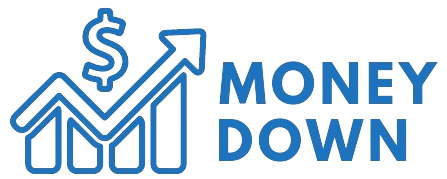What do investors search for when buying environmental, social and governance (ESG) equity index funds? Basically, as with every investment decision made by a fund, it will probably involve higher financial returns, greater portfolio diversification, lower volatility, etc.
But whatever investors expect from ESG funds, they likely expect them to perform higher on ESG criteria than their alternatives. After all, why should the funds be called “ESG” in the event that they don’t take ESG aspects under consideration of their investment decisions?
The problem just isn’t just academic. ESG funds, including each mutual funds and exchange traded funds (ETFs), have grow to be one $400 billion market In the United States alone.
The first step in testing whether ESG funds deliver higher ESG scores is to find out what they ought to be in comparison with.
Many ESG funds track ESG indices, often provided by third-party index builders corresponding to MSCI and S&P. For example, the SPDR S&P 500 ESG ETF is managed by State Street, has $715 million in assets under management (AUM) and is listed under the ticker symbol EFIV. EFIV “aims to deliver investment results that are generally in line with the S&P 500 ESG Index, before fees and expenses,” says the most recent publicly available study data sheet.
The S&P 500 ESG Index itself “is a broad-based market capitalization-weighted index designed to measure the performance of securities that meet sustainability criteria while maintaining similar overall industry group weights as the S&P 500,” it says latest version data sheet from S&P Global.
The S&P 500 is, in fact, the usual stock index weighted by market capitalization and serves because the benchmark for a lot of index funds.
The S&P 500 ESG Index fact sheet refers back to the S&P 500 as a “benchmark” and compares its price performance with the S&P 500. Eight of the highest 10 stocks within the S&P 500 ESG Index are also among the many top 10 within the S&P 500. In fact, the identical 4 Companies – Apple, Microsoft, Amazon and NVIDIA – are each listed in the identical order as the highest 4 holdings.
Since the SPDR S&P 500 ESG ETF tracks an ESG index, which in turn tracks a market index, it ought to be of interest whether the ESG index has the next ESG rating than the benchmark S&P 500. Ultimately, the ESG designation is the crucial one Difference between the 2 indices. However, the very fact sheets didn’t contain ESG scores for these funds.
To approximate their ESG scores, we took each company’s top 10 holdings and manually calculated a capitalization-weighted rating using each company’s publicly available ESG scores from MSCI and Sustainalytics.
We averaged the outcomes from the 2 rating agencies and located that the S&P 500 ESG Index has a capitalization-weighted ESG rating that’s 6.0% higher than the S&P 500.
ESG scores: ESG indices vs. market indices

We repeated this exercise with 19 other popular ESG indices. In each case, we verified that the ESG index compared its performance to a mainstream market index and calculated the ESG “uplift” relative to the benchmark based on the ten largest holdings in each index.
Of course, the highest 10 holdings are an incomplete indicator of the general index, but the businesses in query represent on average 25% and 31% of the entire capitalization of the market indices and the ESG indices, respectively. Additionally, ESG index creators will likely want to pick out firms with the best ESG scores for his or her largest holdings, provided this doesn’t introduce an excessive amount of tracking error relative to the benchmark. Such a variety process would further reinforce the ESG Index’s apparent improvement in ESG criteria over its mainstream market benchmark.
ESG index Improvement of the ESG rating in comparison with the market index

However, our key finding is that the ESG indices tended to have only barely higher ESG scores than their parent market indices. Some ESG indices even had a lower ESG rating because their capitalization-weighted values were lower than their parent indices.
While the variability between ESG indices and market fluctuations was wide, starting from -26% to +43%, most deltas were within the 0 to 10% range, with an overall average of 8.3%.
Whether the small margins of ESG rating improvements are material or not is an issue for every fund’s investors. However, if investors don’t have this information, they can not answer the query.
investors pay 40% higher fees on average for sustainable funds than for non-ESG funds. However, if investors imagine that higher fees lead to significantly higher ESG scores, our research suggests they need to re-evaluate.
If you enjoyed this post, do not forget to subscribe.
Photo credit: ©Getty Images / George Tsartsianidis



